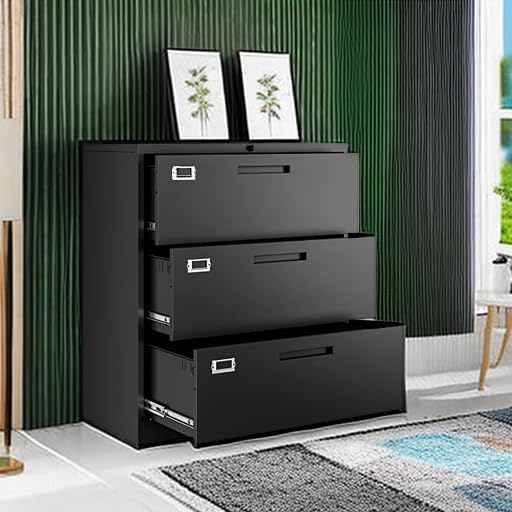The filing cabinet, a staple piece of office furniture, provides essential storage space for documents, files, and other important papers. With a wide variety of styles, sizes, and features available, the filing cabinet can be both functional and aesthetically pleasing.
History and Evolution of Filing Cabinets
The history of filing cabinets can be traced back to the 19th century, when businesses and individuals began to accumulate large quantities of documents. Early filing cabinets were often made of wood and had simple designs. Over time, filing cabinets evolved to incorporate features such as drawers, locks, and indexing systems, making them more efficient and secure.
Types of Filing Cabinets
Filing cabinets come in a variety of styles, sizes, and materials to suit different needs and workspaces. Some of the most common types of filing cabinets include:
- Lateral filing cabinets: Lateral filing cabinets have drawers that are arranged horizontally, making it easy to access and organize documents.
- Vertical filing cabinets: Vertical filing cabinets have drawers that are arranged vertically, providing more storage space for larger documents.
- Mobile filing cabinets: Mobile filing cabinets have wheels, making them easy to move around a room.
- Fireproof filing cabinets: Fireproof filing cabinets are designed to protect documents from fire damage.
- Combination filing cabinets: Combination filing cabinets have both lateral and vertical drawers, offering flexibility and versatility.
Filing Cabinet Materials
Filing cabinets can be made from a variety of materials, including:
- Steel: Steel filing cabinets are durable and offer excellent protection for documents.
- Wood: Wooden filing cabinets can add a warm and natural touch to a workspace.
- Metal: Metal filing cabinets offer a modern and industrial look.
- Plastic: Plastic filing cabinets are lightweight and affordable, but they may not be as durable as other materials.
Choosing the Right Filing Cabinet
When selecting a filing cabinet, consider the following factors:
- Size: The filing cabinet should be the right size for the space where it will be placed.
- Capacity: Determine how much storage space you need for your documents.
- Security: If you are storing sensitive documents, consider a filing cabinet with a lock.
- Features: Some filing cabinets have additional features, such as built-in organizers or drawers.
- Style: The filing cabinet’s style should complement the overall décor of your workspace.
The filing cabinet is an essential piece of office furniture that can help you stay organized and efficient. By carefully considering your needs and preferences, you can choose the perfect filing cabinet to suit your workspace.

